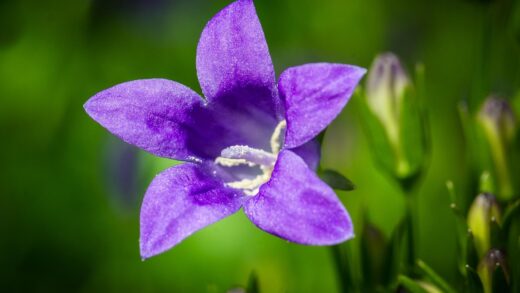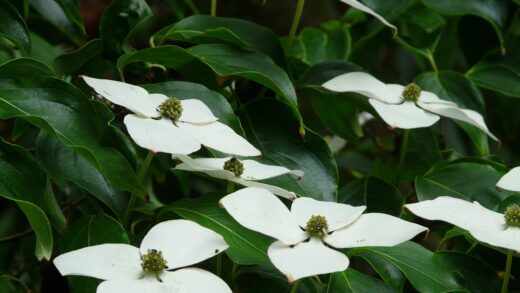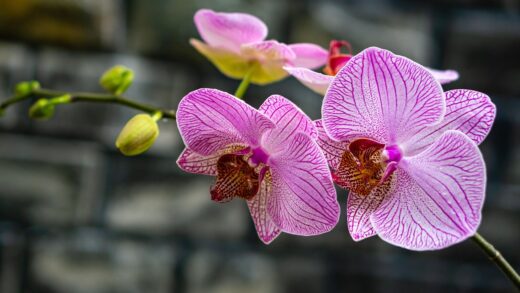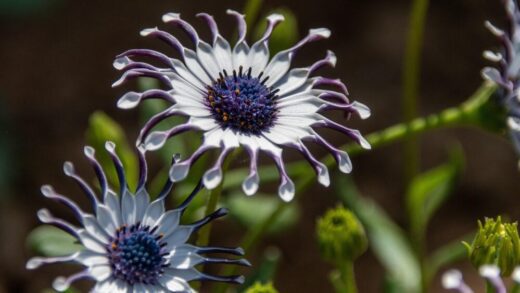One of the most appealing attributes of the Golden Rain Tree for horticulturists and home gardeners is its remarkable resistance to major diseases and serious pest infestations. It is a tough, resilient species that generally grows with vigor and remains unblemished without the need for chemical interventions. However, no tree is completely immune to problems, and under certain conditions—particularly when the tree is stressed by poor planting, improper care, or adverse environmental factors—it can become susceptible to a handful of diseases and pests. A proactive approach, focused on maintaining optimal tree health through proper cultural practices, is the most effective strategy for preventing these issues. By understanding the potential threats and learning to recognize their early signs, a gardener can take swift and appropriate action to protect the health and beauty of their tree.
The tree’s first line of defense against any health issue is its own vitality. A Golden Rain Tree that is planted in a suitable location with full sun and well-drained soil, and that receives adequate water during its establishment, will be far more capable of warding off pathogens and fending off insect attacks. Stress is a key predisposing factor for many tree problems. Conditions such as drought, waterlogged soil, soil compaction, nutrient deficiencies, or mechanical injuries from lawnmowers create a weakened state, making the tree an easier target for opportunistic pests and diseases. Therefore, preventative care is paramount.
Fungal pathogens are the most common culprits behind the diseases that can affect the Golden Rain Tree. These include organisms that cause cankers, verticillium wilt, and various leaf spot diseases. These diseases often thrive in damp, humid conditions and can be exacerbated by poor air circulation within the tree’s canopy. While rarely fatal in a healthy tree, they can cause aesthetic damage and, in severe cases, lead to branch dieback. Proper pruning to open up the canopy and watering at the base of the tree rather than on the foliage can significantly reduce the risk of these fungal issues taking hold.
In terms of pests, the Golden Rain Tree is occasionally visited by common sucking insects like aphids and scale, as well as a more host-specific insect known as the goldenrain tree bug. For the most part, these insects do not cause significant harm to a mature tree, and their populations are often kept in check by natural predators such as ladybugs, lacewings, and predatory wasps. A healthy landscape that encourages biodiversity will naturally help to manage these pest populations without the need for insecticides, which can harm beneficial insects and disrupt the local ecosystem.
Common fungal diseases affecting the tree
While generally robust, the Golden Rain Tree can be susceptible to a few fungal diseases, with Verticillium wilt being one of the most serious, albeit uncommon. This is a soil-borne fungus that enters the tree through its root system and clogs the vascular (xylem) tissues, which are responsible for transporting water from the roots to the leaves. The symptoms can be sudden and dramatic, often appearing on one side of the tree or on a single major branch. The leaves on the affected branch will wilt, turn yellow or brown, and drop prematurely, even while the soil is moist. There is no chemical cure for Verticillium wilt, so management focuses on providing supportive care and pruning out dead branches to improve the tree’s appearance.
More articles on this topic
Leaf spot diseases are another group of fungal issues that can affect the foliage of the Golden Rain Tree. These diseases are caused by various fungi and typically manifest as small, dark spots or blotches on the leaves, sometimes with a yellow halo. While they can make the foliage look unsightly, they rarely cause serious harm to the overall health of an established tree. Leaf spot infections are most common during particularly wet and humid spring or summer seasons. To manage the problem, it is important to rake up and dispose of fallen leaves in the autumn, as the fungi can overwinter in this debris. Improving air circulation through pruning can also help the leaves dry more quickly, making conditions less favorable for fungal growth.
Canker diseases are another potential problem, characterized by the formation of localized, dead areas on the bark of stems, branches, or the trunk. These cankers can appear as sunken, discolored, or cracked sections of bark, and they can sometimes ooze sap. Cankers disrupt the flow of water and nutrients within the branch, and if a canker encircles a branch completely (a process called girdling), it will kill the branch beyond that point. These diseases often gain entry through wounds from improper pruning, storm damage, or mechanical injury. The best management strategy is prevention through careful handling of the tree and the surgical removal of any cankered branches, cutting back to healthy wood.
Root rot is a significant threat to Golden Rain Trees that are planted in poorly drained or consistently waterlogged soils. Pathogens like Phytophthora thrive in anaerobic, saturated conditions and attack the tree’s root system, causing it to decay. Above ground, the symptoms can be subtle at first, including poor growth, small, pale leaves, and canopy dieback, and can be mistaken for drought stress. Unfortunately, by the time significant symptoms are visible, the root damage is often extensive and irreversible. The only effective management for root rot is prevention by ensuring the tree is planted in a location with excellent drainage from the outset.
Identification and management of cankers
Cankers are a significant concern for the health of a Golden Rain Tree, as they directly damage the vital tissues responsible for transporting water and nutrients. A canker is essentially a plant sore—a dead, localized area on the bark of a branch or trunk caused by a fungal or bacterial pathogen. They often begin at the site of a wound, such as a pruning cut, a crack from frost, or an injury from a lawnmower. Visually, a canker can appear as a sunken, shrunken, or discolored patch of bark. The bark in the cankered area may crack, flake off, or show small, pimple-like fungal fruiting bodies. In some cases, a gummy, resinous substance may ooze from the edges of the canker.
More articles on this topic
Early and accurate identification of cankers is crucial for effective management. Regularly inspecting the trunk and main branches of your tree, especially during the dormant winter season when the branch structure is fully visible, can help you spot cankers before they become large and cause significant damage. Look for any areas that appear flattened or have unusual coloration compared to the surrounding healthy bark. Pay close attention to branch unions (crotches), as these areas can sometimes be weak points where infections can start. If you suspect a canker, you can gently scrape the outer bark with a knife; a healthy cambium layer underneath will be green, while a dead, cankered area will be brown or black.
The primary management strategy for canker diseases is sanitation through surgical pruning. If a canker is found on a branch, the entire branch should be removed at a point well below the visible canker. The cut should be made at the branch collar, where the branch joins a larger limb or the trunk, ensuring you are cutting into healthy wood. For cankers on the main trunk, which cannot be pruned out, the prognosis is much poorer. In some cases, a trained arborist may be able to carefully excise the cankered tissue, but this is a difficult procedure and is not always successful.
Preventing cankers is far more effective than trying to cure them. This involves minimizing wounds to the tree whenever possible. Use proper pruning techniques, making clean cuts just outside the branch collar to promote rapid healing. Avoid wounding the trunk with lawn equipment by maintaining a wide mulch ring around the base of the tree. Furthermore, maintaining good overall tree health through proper watering and nutrition helps the tree’s natural defense mechanisms to compartmentalize or wall off infections before they can spread. Disinfecting pruning tools between cuts, especially after cutting a diseased branch, can also help prevent the spread of pathogens.
Insect pests to monitor
The Golden Rain Tree is host to a specific insect known as the goldenrain tree bug (Jadera haematoloma). These insects are a type of scentless plant bug, identifiable by their black bodies with distinctive red markings on their shoulders and eyes. They are often seen in large congregations, particularly in the late summer and autumn, on the bark of the tree and on the ground below, where they feed on the seeds within the fallen pods. While their appearance in large numbers can be alarming to homeowners, it is important to note that they primarily feed on the seeds and cause little to no significant damage to the overall health of the tree itself.
Control of the goldenrain tree bug is typically not necessary, as their feeding habits are largely cosmetic and do not threaten the tree’s vitality. They are considered more of a nuisance pest than a destructive one. In some cases, they may wander from the tree and congregate on the sides of houses or patios. If their numbers are bothersome, they can often be managed by simply sweeping or vacuuming them up. Since they feed on the seeds, a practical way to reduce their population for the following year is to rake up and dispose of the fallen seed pods in the autumn rather than letting them accumulate under the tree.
Other, more common sucking insects such as aphids and scale can occasionally be found on Golden Rain Trees, though significant infestations are rare. Aphids are small, pear-shaped insects that cluster on new growth and the undersides of leaves, sucking sap and excreting a sticky substance called honeydew. Scale insects appear as small, immobile bumps on the stems and branches, also feeding on sap. In most cases, natural predators like ladybugs and lacewings will keep these pests in check. If an infestation becomes heavy, a strong spray of water from a hose can dislodge aphids, or an application of horticultural oil or insecticidal soap can be used to control both pests.
It is important to properly identify any insect on your tree before resorting to chemical treatments. Many insects are beneficial or harmless, and broad-spectrum insecticides will kill these beneficial predators along with the pest insects, potentially making the problem worse in the long run. By encouraging a healthy ecosystem in your garden and tolerating minor insect activity, you can often avoid the need for chemical intervention entirely. Monitoring the tree regularly allows you to catch any potential pest issues early, when they are easiest to manage with simple, non-toxic methods.
Preventative measures for optimal tree health
The most effective and sustainable approach to managing diseases and pests on a Golden Rain Tree is through a dedicated program of preventative care. This begins with placing the tree in the right location from the very start. A site with full sun and excellent soil drainage immediately eliminates the two biggest environmental stressors: insufficient light and waterlogged roots. Planting the tree correctly, at the proper depth and with adequate space to grow to its mature size, further reduces future stress and the likelihood of health problems.
Maintaining good sanitation in the garden is a simple yet highly effective preventative measure. Fungal spores and insect eggs can overwinter in fallen leaves and other debris. By raking up and removing the leaves and seed pods from under the Golden Rain Tree each autumn, you can significantly reduce the amount of inoculum available to start new infections or infestations the following spring. This practice is particularly important if the tree has shown signs of foliar diseases like leaf spot during the growing season.
Proper pruning is not only important for the tree’s structure but also for its health. Thinning out dense areas of the canopy improves air circulation, which allows the leaves to dry more quickly after rain or dew. This creates a less hospitable environment for the fungal pathogens that cause leaf spot and other foliar diseases. Additionally, promptly removing any branches that are dead, damaged, or rubbing against each other eliminates potential entry points for canker diseases and wood-boring insects. Always use sharp, clean tools to make precise cuts that the tree can heal quickly.
Finally, promoting overall tree vigor is the ultimate defense. This involves providing adequate water during the establishment period and during severe droughts, applying a balanced fertilizer if the soil is deficient, and protecting the tree from mechanical injury. A layer of organic mulch around the base of the tree helps to conserve moisture, moderate soil temperature, and suppress weeds, all of which contribute to a healthier root system. A healthy, vigorous tree is better able to compartmentalize wounds, fight off infections, and tolerate minor pest feeding, making it a truly low-maintenance and resilient landscape asset.
📷 Flickr / Szerző: Plant Image Library / Licence: CC BY-SA 2.0


















